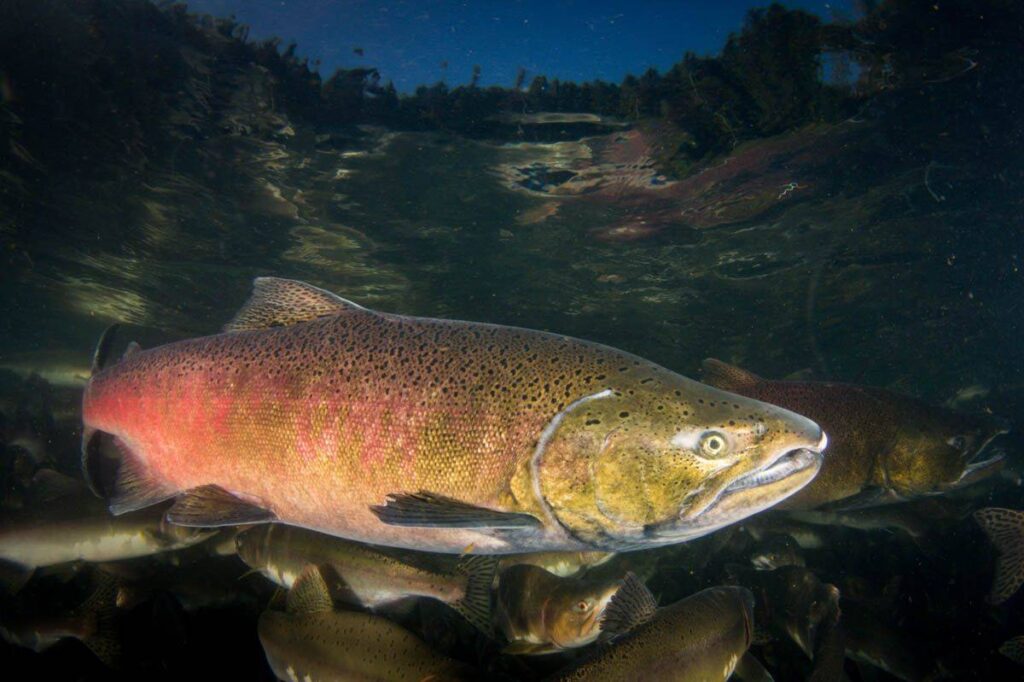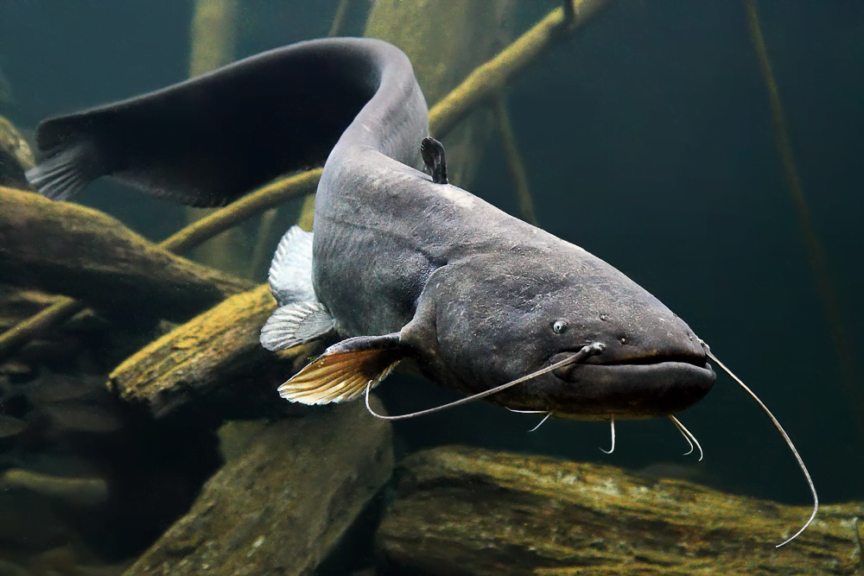Salmon belongs to the category of fish that easily adapts to different living conditions, can change its appearance, as well as its color tone, depending on the current place of life. This is an impressive and interesting fish that deservedly bears the name of the queen of fish!
How to identify salmon
The body is spindle-shaped, slightly flattened from the sides. The head is small. The back is blue, the sides are silvery, the belly is white. Sides of the body with crescent-shaped spots. It grows up to 1.5 m in length and 45 kg in weight.
Adults Atlantic salmon lives in the sea, spawns in watery, spring-fed rivers and streams, where the young stay for 2-3 years. Salmon hatched in rivers feed mainly on various larvae, flying insects that accidentally fall into the water. 10-15 cm salmonids migrate to the sea, where they feed on invertebrates, crustaceans, and later on fish. During the migration, part of the pike die due to the impact of predators: fish-catching birds (cormorants, toothed beaks), attacks by predatory fish (pike, pike, perch or other species).
Ripe in 4-5 years at 40-45 cm. During spawning, it darkens, the lower cheek curls up. It spawns in the months of October-November in the ravines and rapids of its native rivers. They do not feed while spawning and swimming towards the spawning grounds. After spawning, it returns to the sea. Spawns 2-3 to 4 times in a lifetime. Vislum - up to 25 thousand. roe The orange eggs are buried with cleaned gravel, fine gravel, which develop for about 4 months.
In the months of March-April, they hatch into 17-20 mm long young. When they get a little older, elongated dark spots appear on their sides, with smaller black and red dots between them. These markings disappear when the fish reaches a length of 10-15 cm. A salmon that has reached this stage is called a puck.
Lifestyle
Salmon is a classic anadromous fish that usually lives permanently in the sea or ocean. She returns to the rivers only to spawn. Despite some species differences, all "salmon" live a similar lifestyle. After reaching the spawning period, salmon swim into the waters of fast rivers and ascend hundreds of kilometers upstream to spawn.
As you go upstream, the fish begin to change. Their body color darkens, and a kind of hook-shaped outgrowth forms on the jaw. This is especially true for males. During this period, the color of the fish flesh changes to paler, as the total fat mass decreases. This is due to the fact that the diet of salmon becomes less and less, and the fish expends quite a lot of energy.
Before spawning, salmon choose resting places that are not shallow and not too rapid, with a sandy, stony or rocky bottom. Basically, such places are located near spawning grounds.
According to experts, salmon live an average of no more than 10 years, although some varieties can easily live up to 25 years.
What does salmon eat?
Salmon have a very diverse diet that includes a variety of small fish, as well as fry, crustaceans, molluscs, baby squid and various worms. Although rare, they even have jellyfish in their diet.
In the first stages of their life, the younger generation of salmon feed on the larvae of various aquatic insects. Some species at this stage eat various types of small fish along with other types of predatory fish. At the same time, it should be noted that the diet of salmon often changes due to the current situation related to the season and habitat conditions.
Enemies of salmon
Both roe and fry are completely unprotected from predatory fish such as bream, trout, pike, bream, perch, etc., and seagulls and other predatory birds are very active in feeding on the eggs. Salmon that have managed to grow up and swim to the open sea are at risk from other predatory fish.
There are several critical factors that negatively affect salmon population size. Poachers who catch fish in spawning grounds and destroy entire salmon populations deserve special attention. Scientists have found that the actions of poachers can significantly damage the entire reproduction process of this fish.
Other unfavorable conditions are lack of food, uncontrolled fishing, pollution of oceans and rivers. Due to a number of negative factors and a rapidly decreasing population, salmon are included in the Red Book. And a separate organization also operates in LithuaniaSalmon Diary” which are especially active in protecting salmon during spawning.
Salmon in cooking
Salmon meat and roe are very valuable in our time due to their unique taste properties, as well as the fact that the meat contains many vitamins and minerals, which are so necessary for the normal functioning of all human internal organs. Therefore, it is not surprising that dishes from this fish are highly valued in restaurants and are irreplaceable on any festive table, not only as decoration and proof of family well-being. Salmon meat can be fried, boiled, baked in the oven, but it is considered especially tasty lightly salted, raw. Such dishes are valuable in that almost all valuable components are preserved raw, but some of them are lost due to heat treatment. It should also be remembered that fried fish burdens the stomach, so these dishes cannot be eaten by everyone. A great option is salmon baked in the oven, tasty and light you can find cooking recipes in my article by clicking here.
In other words, dishes from this fish can be eaten by everyone, except those who are intolerant to seafood.







